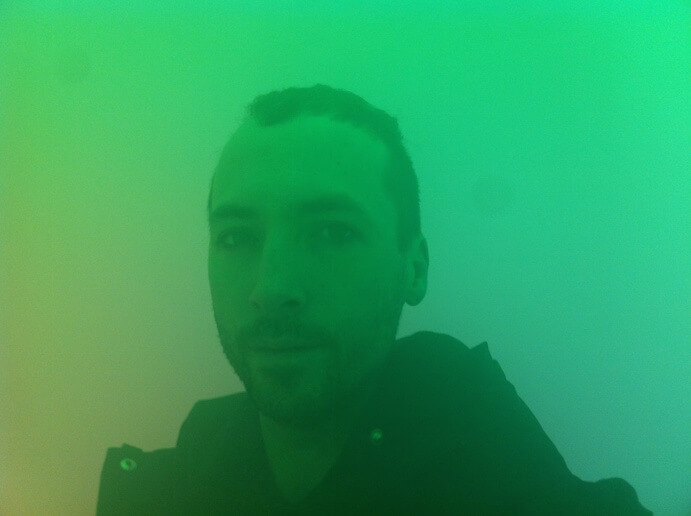Vancouver New Music‘s concert series for the 2015-2016 season opened with Tim Hecker‘s sold-out set at The Orpheum Annex on Saturday November 28, 2015. Unlike most other shows, this one took place in complete darkness, devoid of any acoustic instruments, and lasted approximately one hour without pause or interruption. Though this may seem like an atypical setup, it is in fact ideal for an audience to participate in Hecker’s live performance this way– in a black box, as he prefers– because his music engulfs its listeners. Some describe what they hear as loud while others call it ambient drone; neither description wrong, per se, but neither is quite accurate either. Hecker delivers deep sounds that infiltrate, morph, and expand in all directions, so his work is by nature a difficult thing to define. In experiencing his music, one is enraptured by losing sense of all else, perhaps even language.
As is the case with all other Vancouver New Music concerts, the evening was preceded by a 30-minute artist talk designed to inform the audience about the piece(s) they’re about to hear and how the artist(s) conceived of them. Thanks to some insightful questions and moderation by VNM’s artistic director Giorgio Magnanensi, Hecker was encouraged to talk openly about his points of departure as well as his artistic process. Despite his attempt to demystify what goes on behind-the-scenes, however, Hecker’s explanations still remained somewhat nebulous. His most resolute comments throughout the talk addressed the importance of curiosity and experimentation throughout his work, his sculptural approach to music making, and the active choice of cultivating ignorance so as to help free his expression from external references.

Tim Hecker
This all comes across quite evidently in Hecker’s hour-long set, an untitled gradient of works in progress derived from heavily processed and unrecognizable samples of 15th century sacred music. At no point did the historical context, cultural implications, or musical form of Gregorian chant seem to influence his performance; one could argue that this knowledge helped Hecker to shape his music in a covert manner at best, if at all. For the most part, he simply presented the audience with an ocean of densely fluctuating textures communicated through volume (in the sense of both power and space) and chromatic tones. Often times, the music was intense to the point of feeling the vibrations in your gut, but other times it would rise to the surface and briefly take on a rhythmic, melodic quality, hovering above Hecker’s sonic topography like a mirage. These moments of coming up for air were never long, though they sustained a noticeable presence given the relentlessness of the set as a whole. Hecker knew exactly where to place these moments, which in turn speaks volumes about his mastery of the dynamic range of his music.
For those not familiar with Tim Hecker’s oeuvre, or even for those well acquainted, his performance was raw, immense, yet never too difficult to engage with at a visceral level. There is an inviting quality of warmth to Hecker’s music not in the sense of comfort, but rather as one might relate the concept to radio static. This, in fact, was the only audible noise in the room before the music began.




















